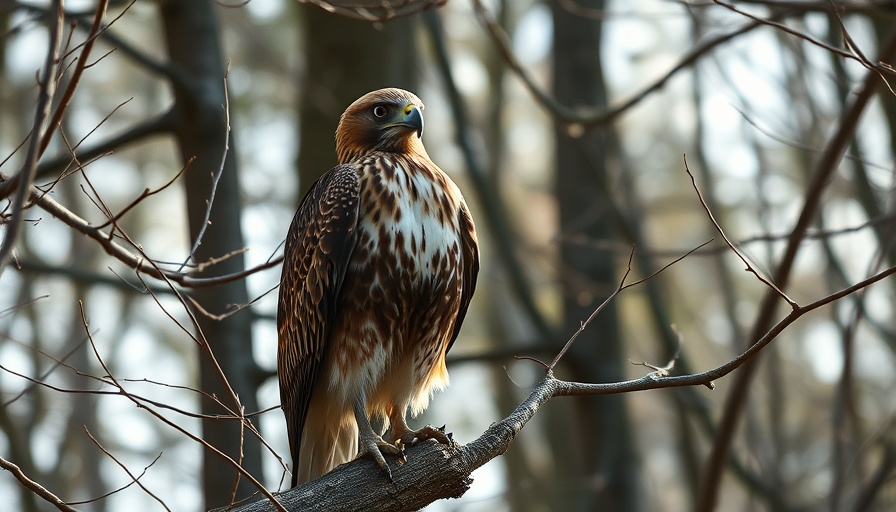
Residents Cautioned: The Red-Shouldered Hawk’s Nest Behaviors
In a recent series of events, residents in Pearland, Texas, have found themselves targeted by a fierce defender of its nest— the red-shouldered hawk. Known for their striking appearance and powerful presence, these birds of prey are usually not a threat to humans. However, during nesting season, which runs from January to August, the protective instincts of the red-shouldered hawk can turn them into aggressive defenders of their territory, diving towards perceived threats.
A Deeper Look at Red-Shouldered Hawks
The red-shouldered hawk, easily identifiable by its red shoulders and distinctive call, is a common sight across North America. Typically, these birds are admired for their beauty and skill in hunting. It is only during the nesting period that their behavior changes dramatically. As they prepare to raise their young, their instinct to protect can cause them to engage in intimidating dive-bombing maneuvers against anyone who gets too close to their nests. Experts from Texas Parks and Wildlife have noted that this is a temporary phase that should ease once the nestlings fledge, which typically occurs within a few weeks.
Understanding the Aggressive Behavior
This behavior can seem alarming to unsuspecting residents, but it is crucial to understand that this is part of the natural cycle of avian life. According to bird behaviorists, the aggression displayed by these hawks is a protective response triggered purely by instinct. They generally do not want to harm humans; rather, they are simply defending their offspring from any perceived threats.
How to Safely Coexist with the Red-Shouldered Hawk
Residents in affected areas are encouraged to remain vigilant and take precautions to coexist peacefully with this feathered neighbor. Here are some recommendations:
- Stay Away from Nests: If you notice a hawk dive-bombing in your vicinity, it’s essential to move away from the area, especially if a nest is nearby.
- Wear Hats or Helmets: To avoid any potential physical encounters, consider wearing hats or helmets when outdoors during nesting season.
- Avoid Direct Eye Contact: Birds can interpret direct eye contact as a threat. Keeping your gaze averted can sometimes reduce aggressive behavior.
The Importance of Birds in the Ecosystem
Understanding and respecting the nesting habits of birds like the red-shouldered hawk is pivotal for local ecosystems. Birds of prey play a vital role in maintaining the health of their habitats, naturally controlling populations of smaller animals and pests. Their presence signals a balanced environment and offers residents a unique opportunity to engage with wildlife.
Community and Conservation Efforts
In Pearland, community efforts to promote wildlife awareness have seen a positive response from residents. Workshops on birdwatching and nesting behaviors encourage residents to appreciate these majestic creatures while practicing safety. Such initiatives not only foster awareness but also invite residents to participate actively in conservation efforts.
What to Expect in the Coming Weeks
Experts predict that as summer progresses and the chicks begin to fledge, residents will likely notice a gradual decrease in dive-bombing incidents. After the nesting cycle concludes, these impressive birds will return to their usual behavior, allowing residents to return to their normal outdoor activities without fear.
Conclusion: Embracing Nature's Cycles
The dive-bombing antics of the red-shouldered hawk may feel intrusive, but they are fundamentally a reflection of nature’s wonder. Nature brings both fascination and challenges; understanding and respecting it fosters communal harmony. As summer arrives in Texas, let's embrace these magnificent birds as part of the local wildlife story.
 Add Element
Add Element  Add Row
Add Row 



Write A Comment